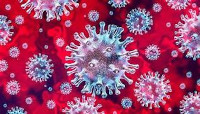Investigation of the Phytochemicals, Metals Content and Antibacterial Activities of Commercial Herbal Preparations Sampled from Lagos Market, Nigeria http://www.doi.org/10.26538/tjpps/v2i4.3
Main Article Content
Abstract
As the use of herbal remedies gains popularity as an alternative form of medicine, it is crucial to ensure their safety. These natural substances consist of a variety of chemical elements, some of which may have beneficial effects while others may not. This study aims to explore the phytochemical composition, levels of trace and heavy metals (including cadmium, lead, copper, nickel, zinc, iron, manganese, sodium, and potassium), as well as the antibacterial properties of fifteen distinct herbal preparations found in pharmacies throughout Lagos State, Nigeria. Standard qualitative techniques were utilized to assess the phytochemical content, while the aqua regia digestion method in conjunction with the atomic absorption spectrophotometric technique was used to determine the metal content. For measuring the zone of inhibition against Staphylococcus aureus, Bacillus subtilis, Escherichia coli, and Klebsiella pneumonia, the agar well diffusion method was utilized to determine the antibacterial activity. The results of this study showed that all the herbal products have the presence of reducing sugars in different degrees while triterpenoids were absent in all the products. Metal concentrations in samples A-O were within recommended limits. The range of mean concentrations of the metals, Cd, Pb, Zn, Fe, Mn, Cu, Ni, Na, K obtained were 0.0016-0.0153, 0.00005-0.0185, 0.0785-1.1395, 0.019-1.0380, 0.006-0.0915, 0.002-0.2900, 0.0017-0.0485, 0.4070-1.4795, 0.3195-2.334 µg/ml respectively. Only three samples B, D, and K were effective against Bacillus subtilis. While the other samples did not display antibacterial activities against the bacterial used. These herbal remedies can be considered safe, but long-term effects on health require further research.
Metrics
Article Details

This work is licensed under a Creative Commons Attribution-NonCommercial 4.0 International License.
References
Maitlo, A.A., Jatoi, W.B., Memon, A.F., Soomro, A.H., and Bhayo, M.S. Assessment of Zinc, Lead, Chromium, and Cobalt in Commonly Consumed Herbal Medicines in Sindh, Pakistan. Biol. Trace Elem. Res. 2021; 199(6), 2366-2374.
Ganguli A., Rai, P., Balachandran, S., Gupta, R., Sharma, R., and Neogi, S. B. Heavy Metals in Indigenous Preparations Used for Sex Selection During Pregnancy in India. Biol Trace Elem. Res. 2019; 188(2), 239-244.
Uddin AH, Khalid RS, Alaama M, Abdualkader AM, Kasmuri A, Abbas SA. Comparative study of three digestion methods for elemental analysis in traditional medicine products using atomic absorption spectrometry. Journal of analytical science and technology, 2016; 7(1): 1-7.
Kalumbi MH, Likongwe MC, Mponda J, Zimba BL, Phiri O, Lipenga T, Mguntha T, Kumphanda J. Bacterial and heavy metal contamination in selected commonly sold herbal medicine in Blantyre, Malawi. Malawi Med J. 2020; 32(3):153-159.
Afieroho OE, Achara F, Adewoyin B, Abo, KA. Determination of cadmium, chromium and lead in four brands of herbal bitters preparation sold in Benin-city, Southern Nigeria. Afr. J. of Environ. Sci. and Technol, 2018; 12(5):186-190.
Adusei-Mensah F, Essumang DK, Agjei RO, Kauhanen J, Tikkanen-Kaukanen C, Ekor M. Heavy metal content and health risk assessment of commonly patronized herbal medicinal preparations from the Kumasi metropolis of Ghana. J Environ Health Sci Eng. 2019; 17(2): 609-618.
Sall ML, Diaw AKD, Gningue-Sall D, Efremova AS, Aaron JJ. Toxic heavy metals: impact on the environment and human health, and treatment with conducting organic polymers, a review. Environ Sci Pollut Res. Int. 2020; 27(24): 29927-29942.
Oyebode O, Kandala NB, Chilton PJ, Lilford RJ. Use of traditional medicine in middle-income countries: a WHO-SAGE study. Health Policy Plan, 2016; 31(8): 984-991.
Adeyemi D, Olafadehan E, Anyakora C, Adedayo A. Assessment level of physicochemical properties and trace metals of water samples from Lagos, Nigeria. International J Adv. Res. in Biol. Sci. 2015; 2(12): 163–172
Trease GE, Evans WC. Pharmacognosy 13th edn. Bailliere Tindall, London, 1989; 176-180.
Mostafa AA, Al-Askar AA., Almaary KS, Dawoud TM, Sholkamy EN., Bakri MM. Antimicrobial activity of some plant extracts against bacterial strains causing food poisoning diseases. Saudi J. of Biol. Sci, 2018; (25): 361-366.
World Health Organization (WHO). WHO guidelines for assessing quality of herbal medicines with reference to contaminants and residues. World Health Organization. 2007.
Ayoola GA, Johnson OO, Adeyemi DK, Lapite OM, Doherty CO. Antioxidant and Hypoglycaemic activities of the Ethanol extract of Senecio Biafrae leaves. J Chem. Society Nig, 2017; 42(2): 59-62.
Shonekan OO, Coker HAB and Nash R. Antioxidant and glucosidase inhibition activities of the mushroom: Phaeogyroporus portentosus. J Chem. Society Nig. 2018; 43(1) :15-23
Marcus DM, Grollman AP. Botanical Medicines the need for new regulations. N. Engl. J. Med. 2002; 347: 2073-2076.
Cohen PA, Ernst E. Safety of herbal supplements: a guide for cardiologists. Cardiovascular therapeutics, 2010; 28(4); 246-253.
Palaniselvam K, Mashitah MY, Gaanty PM, Natanamurugaraj G. Biosynthesis of metallic nanoparticles using plant derivatives and their new avenues in Pharmacological applications – An updated report. Saudi Pharm J. 2016; 24: 473-484
Singh R, Gautam N, Mishra A, Gupta R. 2011. Heavy metals and living systems: An overview. Indian J. Pharmacol. 2011; 43(3): 246-253
Prasad MNV, Zhu Y, Lepp N, Naidu R. Trace Element accumulation in medicinal and aromatic plants collected and cultivated in Peri-urban area risk or remedy. Biochemistry of trace elements: Environmental Protection, Remediation and Human Health. Tsinghau University Press, China, 2007; 105-105.
Samali A, Mohammed MI, Ibrahim MB. Analysis of Heavy Metals Concentration in Kano Herbal Preparations for Major Disease Conditions. ChemSearch J, 2017; 8(2): 22 – 28.


